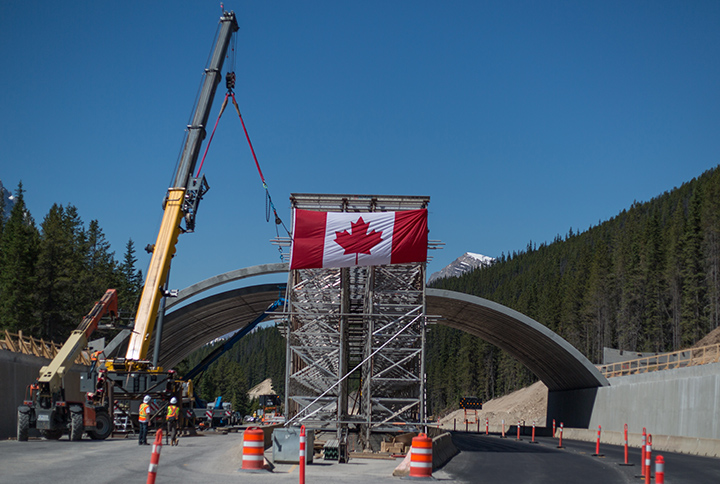If you live in northern climates, you’ve probably heard the joke there are only two seasons: winter and road construction.
Highways in the Yellowstone to Yukon region are no exception, with crews busily planning and constructing wildlife overpasses this summer.
For example, after being twinned in Banff National Park, the TransCanada Highway is now being expanded from two to four lanes into British Columbia’s Yoho National Park.
Starting at the British Columbia/Alberta border going west for approximately the next four miles (six kilometers), the first phase of construction includes a section of highway being widened and prepared for wildlife crossings. This is the first of its kind on the B.C. side of the TransCanada.
Construction started in fall 2016 and includes one overpass, three underpasses and wildlife fencing. Scientific data tells us this is a known crossing area in Yoho National Park, so this project plays an essential role in helping keep drivers and wildlife safer.
The tight turn and narrow valley mean the arch needs to be freestanding, unlike previous designs. The overpass, adapted from a cost-effective design by Animal Road Crossing (ARC) Solutions, spans more than 98 feet (30 meters) and includes 100 arch segments, 50 per side.
The site was chosen based on a number of factors: the high ground on either side of the highway; the further distance from the railway tracks; and the proximity to a nearby mineral lick frequented by mountain goats.
Evidence further east from Banff National Park shows us these crossings work. Deer, elk, coyotes, wolves, mountain goats, black and grizzly bears, as well as smaller animals, are likely to use this new crossing when it officially opens in spring 2018.
“Parks Canada has demonstrated strong leadership in maintaining connectivity in Central Rockies parks by ensuring connectivity across roads,” says Stephen Legault, Y2Y’s Crown, Alberta and N.W.T. program director.
“Yellowstone to Yukon Conservation Initiative is hoping other jurisdictions will continue to increase engagement on safe wildlife crossings and is talking with the province of Alberta to advance similar technology in the Bow Valley in the coming year.”
Meanwhile, in other areas of the Yellowstone to Yukon corridor, it has been a busy spring and summer of planning for wildlife overpasses.
Idaho just committed to building its first overpass in the state near Boise in on Highway 21, and Y2Y is a supporting partner.
Additionally, on Highway 20 near Yellowstone National Park, Idaho is studying highway expansion projects with wildlife overpasses. We are leading a partner group to raise awareness about the need to ensure wildlife can cross the road safely.
Y2Y supports Idaho’s interest in safe wildlife crossing. This past spring we coordinated workshops and led tours in Idaho and Wyoming that helped engineers there understand why overpasses are critical for wildlife and human safety.
Y2Y also brought in transportation expert Terry McGuire, an engineer involved in the Banff National Park overpasses, to provide a training to Idaho engineers on innovative ideas to reduce roadkill and help wildlife cross roads safely.


